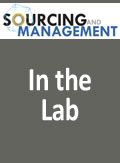Best Weighing Practices in the Pharmaceutical Industry
PTSM: Pharmaceutical Technology Sourcing and Management
Understanding what affects a measurement and implementing appropriate procedures will aid weighing accuracy.
One of the most crucial pieces of equipment being used in every pharmaceutical facility is the weighing equipment, which includes weighing scales and analytical balances. Every ingredient that is used for manufacturing a pharmaceutical product must be weighed accurately so that the recipe isn’t compromised, which would affect the quality of the end product. Here are some best weighing practices that every pharmaceutical company should implement.
Calculate measurement error
There are no ideal measurements in the pharmaceutical industry. Each measurement is afflicted by an error. The measured volume’s real value can never be defined absolutely due to imperfections of instruments and methods.
Measurement error can be defined as the difference between a measurement result and a measured volume’s real value. Measurement error is divided into different components:
- Gross error mostly occurs due to operator’s inattention or as a result of sudden change of measuring conditions, such as shocks or a breeze of air.
- Systematic error is a measurement error component that remains stable or changes in a predictable way during measurement repetition and is a result of imperfection in devices and measuring methods. This type of error should be considered if corrections (adjustments) are introduced to the measuring result.
- Random error is a measurement of error component that changes in an unpredictable way during repeatable measurements. Random error = Measurement error - systematic error.
Choose a weighing balance
Understand that balances are used to measure masses in different stages. Some of the commonly used balances include four load-cell scales, which are used to distribute heavy loads to light loads; micro balances, which are used in laboratories; or single-load scales, which are used in the production stage. Ensure that the correct calibrated scale is used at all stages of weighing.
Maintain and calibrate weighing instruments
Routine testing must be carried out for all the balances being used in the facility. Define the routine testing and document it. Performing routine examination of balances helps in keeping balance data integrity, product safety, and product quality.
Perform the routine tests based on the intervals that are accepted by the company. Either schedule the test intervals on the balance to ensure that they are performing optimally, or calibrate the balance immediately before the measurement process starts. The latter is possible, however, only if the balance is not on heavy-duty use. Schedule instrument calibration as per the manufacturer’s guidelines, based on the different needs of various scales.
Perform quality risk management
Performing quality risk management helps avoid the risk of weighing incorrectly. Have a complete understanding of the devices that are being used for weighing in the facility, and gather information on the measurement possibilities that need to be controlled and used in practice. Estimate the repeatability and the sensitivity of the balance to determine if it is operating properly or if there is some deviation.
Consider external factors
Take into account all the external factors that the weighing balances are exposed to in a typical laboratory. External factors consist of all the factors that originate from the ambient area and people who influence the measurement result. Though it isn’t possible to define all the external factors, the main ones include:
- Oscillations
- Electrostatics
- Air breeze
- Vibrations
- Magnetism
- Temperature drifts
- Evaporation and absorption phenomena (hygroscopicity).
These factors are capable of influencing both the balance as well as the object being weighed.
Conclusion
Implementing best weighing practices assures high product quality and lowers the risk of analysis. Following these practices will help in attaining accurate weighing results.
About the author
Kevin Hill heads the marketing efforts at Quality Scales Unlimited in Byron, CA, Kevin@scalesu.com.

Entering New Domains for 3D Printing of Drug Products
April 6th 20253D printing of personalized medications is currently possible under existing compounding regulations, offering enhanced process control through automation. But new legislation coming in 2025 will allow 3D printing as part of a distributed manufacturing framework.